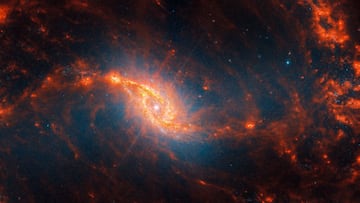How is it possible that NASA has discovered galaxies older than the universe?
Astronomers using the James Webb Space Telescope have observed six massive galaxies that seem to defy our understanding of cosmic evolution.


About 13.8 billion years ago, the entire contents and energy of the universe were concentrated in a singularity—a point of infinite density and temperature. This singularity began to expand rapidly, an event we now refer to as the Big Bang.
During this explosive birth, the fundamental forces of nature—such as gravity, electromagnetism, the weak force, and the strong force—began to emerge in stages. That’s why when the JWST spotted some galaxies that seemed to jump some of those stages it all seems too strange.
Why are these galaxies older than the universe? Did they exist before the Big Bang?
These galaxies were spotted when the universe was a mere 500 to 700 million years old, a time when it was just 3 percent of its current age. At that point, the universe was still in its infancy, and most theories predicted the existence of small, young galaxies.
However, these newly identified galaxies are anything but small. Their mass of stars totals several billion times larger than our sun. One of them might even be as massive as 100 billion times the mass of our sun. To put this in perspective, our own Milky Way galaxy contains a mass of stars equivalent to roughly 60 billion suns.
The “S” of #UNESCO stands for #Science. Mention of the James Webb Space Telescope and it’s discovery of galaxies older than the computed age of the Universe, during the closing of the #APX statement at the 42GC. #JWST pic.twitter.com/rDQ7LFqUcv
— Vishal V. Sharma 🇮🇳 (@VishalVSharma7) November 22, 2023
Related stories
To understand this, we have to look at red-shifting. The older the body in the universe, the hue of color detected by telescopes changes. The color changes to red, and the difference in the proportion of red indicates whether the galaxy is older or younger. The redshift of these galaxies indicates not only their extreme age but also their immense size and the presence of massive stars.
As galaxies age, they produce more suns, and in this case, the total mass is 100 billion times larger than our galaxy, a phenomenon for which there is currently no clear explanation. This is particularly significant because these galaxies formed without the need for dark matter, an element previously believed to be necessary to hold them together.


Complete your personal details to comment